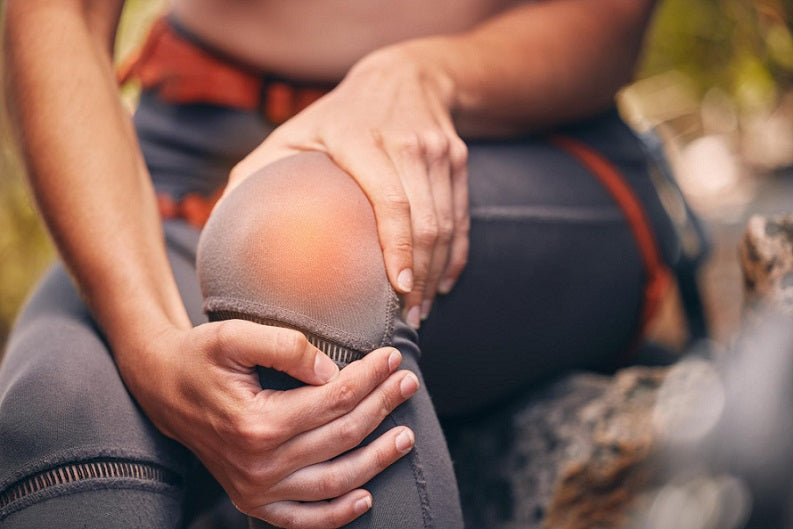
Osteoarthritis hip treatment

Hip osteoarthritis: non-prosthetic treatment and management alternatives with mesenchymal stem cells.
Hip osteoarthritis, whether focal or generalized, is a frequent and difficult-to-manage pathology that generates pain and disability. Medical treatment is based on using analgesics and anti-inflammatories, including those of natural origin. However, in addition to the complications associated with its prolonged use, as the disease progresses, they become less effective. At this point, interventional alternatives of different degrees become essential. Treatment is made difficult by the location and sphericity of the joint and is generally limited to total hip arthroplasty in generalized osteoarthritis. Before this, there are alternatives for the treatment of deep chondral lesions or focal osteoarthritis that include resection, debridement, thermal chondroplasty, and/or microfractures with or without biological adjudication (Hyaluronic Acid, Platelet Rich Plasma (PRP) and Mesenchymal Stem Cells ( CMM). This review focuses on using new technologies that could improve the results obtained with conventional techniques, including infiltrations (Corticoids/Hyaluronic Acid/PRP/CMM). The use of biological therapies is based on MSCs, corresponding to intra-articular injections of expanded MSCs, concentrated mononuclear cells in a PRP matrix, and expanded MSCs seeded on a collagen membrane.
Introduction
Osteoarthritis of the hip is the most common type of arthritis and the leading cause of disability in the United States (1). Unfortunately, the available treatments seek to alleviate the symptoms but cannot modify the disease's natural course (2). Therefore, there is a real need for an effective and safe treatment, not only for those patients with generalized osteoarthritis but also to delay or prevent its progression in multifocal osteoarthritis (3).
Understanding the functioning of the hip joint is fundamental in diagnosing and managing the pathologies that affect it. The alterations of the different tissues, intra, and extra-articular, resulting from acute events or chronic degenerative changes, will significantly impact its function, generating pain and limitation in the patient.
The hip is a ball-and-socket joint, that is, a ball-and-socket joint, formed by a concave surface within a convex one, where multiaxial rotational movements are generated without obvious translation, given by perfect coaptation and stability. The shape of the acetabulum, the labrum, the articular cartilage, the capsule, and the periarticular muscles provides this unity. This review focuses on articular cartilage (4).
The articular surface of the hip is covered by multiple highly organized layers of hyaline cartilage, made up of a network of type II collagen and glycosaminoglycans that concentrate water and increase resistance to the high loads of tensile forces to which the hip is subjected. Joint (4).
Osteoarthritis of the hip consists of damage to the articular cartilage, either deep focal or generalized, altering the congruence and coaptation of the joint. Focal osteoarthritis may be due to a traumatic event or delamination caused by femoroacetabular impingement or other alterations in the form and function of the joint. These localized lesions overload the surrounding cartilage, generating a progression to generalized osteoarthritis (4).
The treatment of osteoarthritis of the hip varies according to the extent of the injury.
Generalized enarthrosis treatment
In this subgroup of patients, the involvement of the joint is global, with extensive damage to the entire articular cartilage. This generates characteristic radiological changes: decreased joint space and the appearance of cysts, osteophytes, and geodes. In these patients, the medical treatment alternatives are limited and correspond mainly to lifestyle changes, non-impact exercises, nonsteroidal anti-inflammatory drugs, glucosamine and chondroitin sulfate, corticoidal infiltrations, and viscosupplementation (2,3). All of these produce temporary symptomatic relief and are effective for pain management; however, their effect is limited in time, and is not immune to the adverse effects of chronic use. The definitive treatment of generalized osteoarthritis of the hip is surgical and consists of replacing the joint using a total hip arthroplasty.
Joint injections are a common practice in the symptomatic management of a degenerative joint disease. Intra-articular administration of corticosteroids, guided by ultrasound or under fluoroscopy, generates rapid pain relief, but this effect is not maintained over time. There are multiple clinical studies on the subject, with extremely variable symptom relief duration; none of them demonstrate an effect that exceeds
Twenty-four weeks post-infiltration (5,6). Hyaluronic Acid, compared to corticosteroids, requires a longer time to achieve symptom relief; however, it is maintained for a more extended period (6,7). Intra-articular infiltration of platelet-rich plasma (PRP) is superior to corticosteroids and equivalent to Hyaluronic Acid, generating more prolonged symptom relief (8,9).
Although it is known that intra-articular infiltrations generate limited symptomatic relief over time, they considerably reduce the use of concomitant analgesics, which implies a significant socioeconomic impact (10).
Focal ball socket treatment
Focal hip osteoarthritis has classically been managed in a similar way to that of other joints, homologating the results obtained in the knee; however, the characteristics of the joint, the composition and anatomy of the cartilage of the acetabulum and femoral head, associated with the presence of types of injuries typical of the hip (delamination) mean that the applied techniques and results obtained in other joints cannot be duplicated. At the same time, smaller lesions with a high degree of joint penetration generate important symptoms, altering the normal function of the joint (11,12). Delamination is a characteristic focal osteoarthritis of the hip, in which the cartilage detaches from the subchondral bone. Among the classifications used in focal osteoarthritis, Outerbridge's is one of the most popular, in which delamination would correspond to type III (deep) (12). The surgical treatment alternatives are described below according to the types of focal osteoarthritis, according to the Outerbridge classification.






